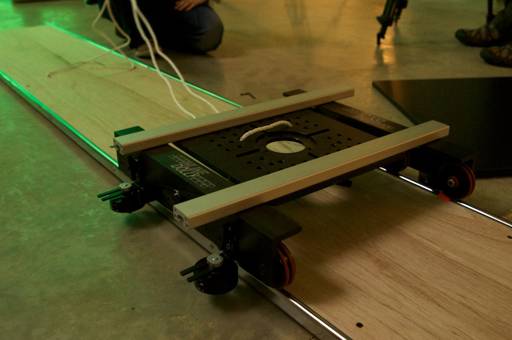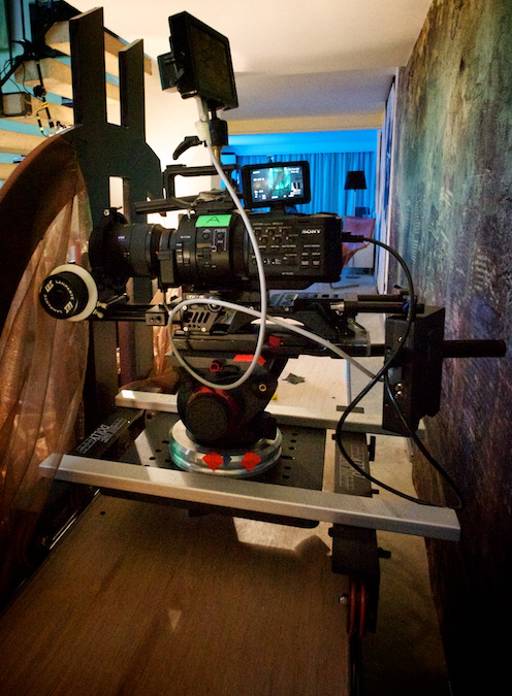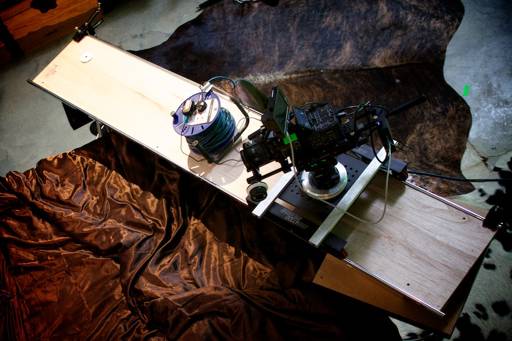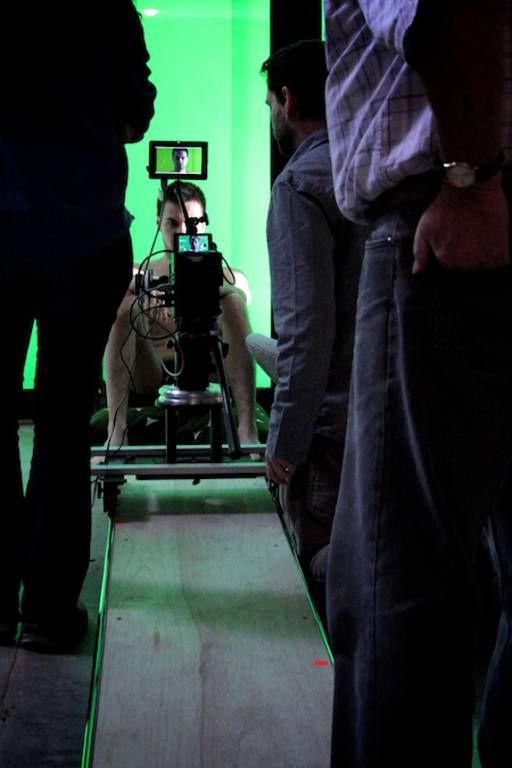We knew we wanted some kind of decent dolly. We had a slider, which was a bit lightweight but useful for some moves but we needed something longer.
Inline Dolly

We knew we wanted some kind of decent dolly. We had a slider, which was a bit lightweight but useful for some moves but we needed something longer. We'd considered a floor dolly and in fact at one point we were hoping to get someone on board who also happened to have a Chapman but sadly for all sorts of reasons we were unable to get things to work out, also the floor of the location was only smooth-ish. It was polished concrete but with quite a few bumps and joins. Most importantly a lot of the drama plays out in the main bed and so it would be useful to be able to get over the bed.

Enter the ladder dollies. These are designed to run on ladders or pipes and can be really quite heavyweight. We looked at lots of different ones, from local versions like the B Hauge to industry standards like the CamTram or Dana Dolly however a new contender caught our eyes, the Inline Dolly - http://www.inlinedolly.com. Sold on the design and also the great customer support from Boyd Hobbs (the designer) we decided to import one of these. One of the features that really interested us was the silicon rubber rings that cover the metal wheels, these are replaceable and offer a very smooth and cushioned ride.
The dolly itself is easy to put together and the width is adjustable. The bowl mount options are based around a mitchell mount but with adapters for 100mm bowl and then you can adapt that to a 75mm bowl. You can either mount direct to the main metal plate or use the high riser to move the base up a little.

However we discovered an interesting bit of trivia here. Apparently ladders in the US are wider than ladders in the UK. Sods law meant that the minimum width for the inline dolly was larger than the usual UK ladder. Naturally, as these things tend to be, we discovered this at the 11th hour (in fact it probably was 11pm), cue the ADs handyman father/designer who came down the next day and built us a run for the dolly using steel piping and a wooden base. Perfect. This let us start shooting immediately. Then after talking with Boyd another solution was to change the aluminium profiles used so that the main plate could sit on top of the profile and the wheel width be made smaller. Even More Perfect. We sourced some profiles locally (standard sizes) and problem solved. So if you're in the UK it's worth taking this into account.

So how does it run? Very well. The cushioned silicon covered wheels take out any minor bumps or bits of dirt on the tracks and the weight adds good momentum to the move. We found some of the moves quite tough, especially smaller ones but that's more to do with us than the dolly. Certainly compared to most of the sliders we've used it runs a lot better. We did discover quite late a nice technique of using bungie cords to pull and add a layer of indirection between the move and the dolly. We also ran it direct on the floor too where the silicon rubber bands around the wheels really made a difference.
The only caveats we'd point out would be that the side wheels that clamp around the ladder can be quite fiddly to get them to securely touch the edges of most (UK anyway) ladders, also some ladders are designed so the steps are welded through to the outersides, and the amount of clearance between the welds and the edges of the side wheels aren't enough so you'd bump into some of the welded parts. Yes, this is more to do with the ladders we used (and we bought a few variations to find one with the right clearance). We also had a couple of cases of squeaking wheels, we used some silicon spray to dampen down the surrounds and that works.
All in all though we'd very much recommend the dolly - it's a solid, reliable performer.